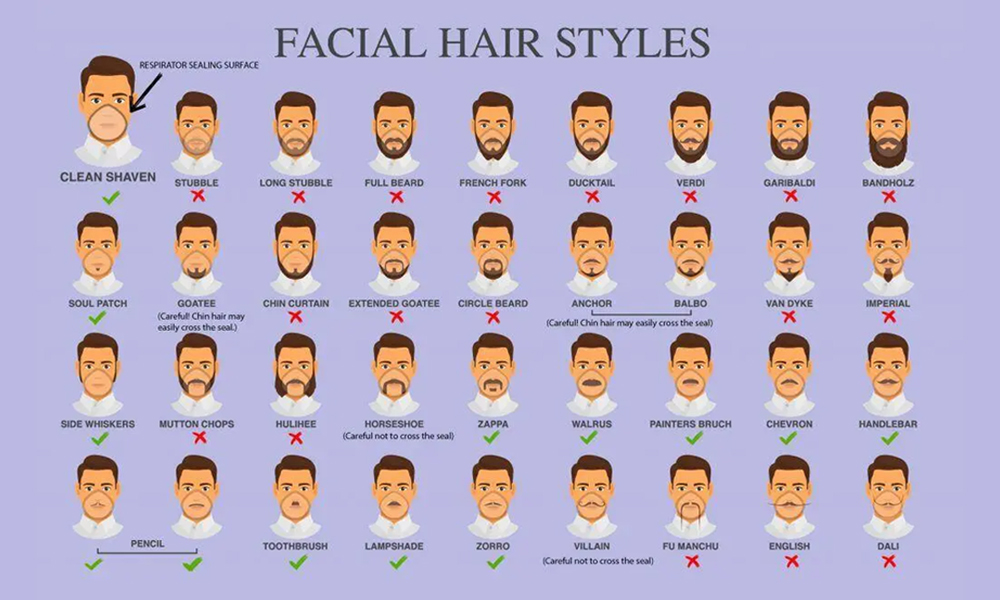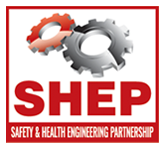
15 Dec Tight Fitting Respiratory Protective Equipment. Is A Fit Check the same as the Face Fit Test?
Rebecca Crosland (GradIOSH)
Head of Health & Safety Building & Engineering Services Association (BESA)
FACE FIT TESTING
Face fit testing is a process for anyone who works in an environment where the use of respiratory protective equipment (RPE) is necessary to ensure that this equipment is properly fitted and achieving an adequate seal.
The HSE has an approved code of practice (ACOP) which states that tight-fitting Respiratory Protective Equipment must be tested with its intended user to ensure that the fit is adequate and Suitable.
There is a requirement for RPE to be suitable for the wearer, environment and task and for those wearing it to be suitably trained in its safe use.
In addition to the COSHH Regulations 2002, RPE need to be used to satisfy requirements in the following pieces of legislation.
- Control of Asbestos Regulations 2012
- Control of Lead at Work Regulations 2002
- Ionising Radiations Regulations 1999
- Confined Spaces Regulations 1997
You can use one of two face-fit testing methods – either Quantitative or Qualitative Methods– but whichever one you choose, they need to be carried out with the same exercises and conditions, with a competent person doing the face fit test.
The HSE strongly recommend using a Fit2Fit Accredited Provider, which can be found or checked on fit2fit.org
Face fit testing is required for all of the following Tight-Fitting types of masks; this means anything that relies on a seal to the skin:
- ALL FFPs (Disposable) masks including 28 day semi reusable disposable
- Re-usable Half Mask with cartridge Filters (non-Powered)
- Powered Re-usable Half/Full Face Masks (not loose-fitting powered hoods)
- Full Face Cartridge Filter Masks (non-powered)
- SOME Escape Set Masks
- Full Breathing Apparatus Masks (BA)
Why is respirator fit important?
People working in hazardous environments need protection from airborne contaminants, which can cause serious physical ailments. When a tight-fitting respirator is used, the fit is critical to enable protection and comfort for the wearer. An inadequate seal between the respirator and the wearer’s face can result in contaminated air entering the mask and therefore being breathed in by the wearer.
The key points are:
- No smoking, drinking, eating or chewing gum for 15 minutes before the test, as this could affect the results.
- No beards or stubble where the mask seals because this affects the fit (some Facial Hair e.g.: Moustache, goatee beards are ok but must be kept trimmed, it depends where the mask sits on the wearer; there may also be an issue with longer side burns. The mask must seal against clean shaven skin to achieve a seal)
- A test must be done for each different type of model, make, size of mask – so anyone wearing a dust mask and a half mask will need to be tested on each one.
- The quantitative APC (Ambient Particle Counting) test is a precise method that uses a Machine to count the particles in the air outside the mask and compare them to what is inside the mask. For all masks from FFPs, Half Masks and Full Face
- The Quantitative CNP (Controlled Negative Pressure) test is another precise method that uses a machine to measure pressure inside the mask. For Half and Full Face Masks only.
- The qualitative test uses the wearer’s sense of TASTE to detect any leaks in the mask’s seal. For FFPs and Half Masks Only
During the Face Fit Test a series of 60-second exercises are carried out to determine if the mask fits correctly in this order:
- Normal breathing;
- Heavy breathing
- Turning head from side to side;
- Moving head up and down;
- Talking;
- Bending from the Waste
- Normal breathing.
The final, important point, to remember is that this is a requirement part of COSHH for any over 28-day mask (reusable half/Full Face/Loose Fitting) to perform a maintenance record.
The Regulation states that thorough tests should be carried out at least once a month if in regular use, or if the RPE is only used occasionally, the interval for documented maintenance should not exceed three months.
The guidance provides five key points that need to be followed when carrying out RPE maintenance:
- Follow the manufacturer’s instructions.
- A competent person should carry out the work.
- Keep records for min 5 yeas
- Ensure the intervals for maintenance are appropriate.
- The maintenance programme should reflect the complexity of maintaining the RPE.
The regulation makes it clear that employers must keep records of examination and testing, and any repairs made, for at least five years.
Key maintenance tasks include:
- Changing any replaceable filters;
- Cleaning the device;
- Valve maintenance and replacement;
- Checking the straps for damage;
- Checking the battery charge and flow rate for powered devices.
- Maintenance records can be on your own form or the manufacturers.
Who can complete face fit testing?
RPE fit testing should be conducted by a competent person – you should take steps to ensure that any person you engage as a fit tester is appropriately trained, qualified and experienced, and is provided with appropriate information to undertake each particular task.
The British Safety Industry Federation (BSIF) has introduced a scheme for fit testers called Fit2Fit, which may provide evidence to help you decide whether a fit tester is competent.
A full list of all Accredited Fit2Fit Testers can be found, by following the link below https://www.fit2fit.org/
The list shows the location of the tester and the area they cover whilst also identifying the method of fit test they can conduct.
How often should I have a face fit test?
Under present UK legislation, re-testing of personnel is required only when significant changes to the face have occurred (e.g. scaring, moles, extensive dental work, extreme weight loss/gain) or if the size, make or model of the required RPE changes. However, data presented by the HSE suggests that re-testing should be performed in the UK more frequently.
A PRE-USE CHECK/FIT CHECKS
Fit Checks are required each time the face piece is worn and before entering the hazardous environment. It is needed to determine if the face piece has been correctly fitted before a contaminated work area is entered.
A fit check involves checking the seal of the mask either Positive or negative pressure inside the mask. This is normally done by covering over the filter and:
Positive = Blowing gently and seeing if the mask leaks round the seal (FFPS and some reusable masks)
Negative = Breathing in for the mask to suck down to the face and should be held for 10 seconds (Reusable Masks).
This must be performed by the wearer EVERYTIME the mask is Donned (put on)
The test does not take into account the movements the wearer makes during their work or the effects of pressure inside the mask once working. Do not confuse this with a Face Fit Test
The wearer should carry out a Fit Check each time he or she wears their facemask, to ensure that it is being worn correctly.
The Fit Check should only be carried out on the make/model and size of facemask for which the wearer has already completed and passed an appropriate Fit Test.
Also part of the Pre-Checks to be completed by the wearer involves visually checking the various parts of the mask as recommended by the manufacturer to ensure it is still fit for purpose and has no damage that may reduce the protection it provides to the wearer.
Respirator pre user checks must include checks to ensure:
- Sealing surfaces are clean and free of cracks and holes
- Rubber and elastic parts have good pliability and no signs of deterioration
- Inhalation and exhalation valves are clean and seated properly
- Straps are sufficiently elastic and free of worn areas
- If full face, face shield is cleaned and clear with no scratches, or other damage that may impede visibility

